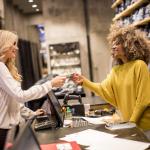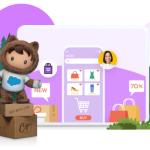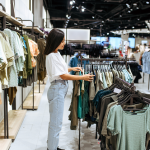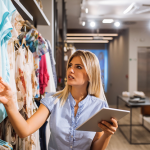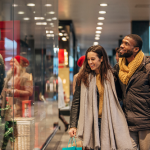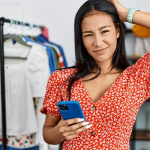From fashion to homeware, the luxury sector has been upended by the pandemic. What are the new challenges and opportunities facing the most exclusive brands — and how should they respond?
When you think about luxury brands, you think of heritage, of time-old craftsmanship. It’s an industry steeped in generations of tradition. So what happens when something comes along that forces that industry (and all industries) to rapidly modernise?
At our Salesforce Live: Switzerland 2020 virtual event, we explored how the COVID-19 pandemic is affecting luxury brands and how they can emerge stronger from the crisis. Watch the Luxury session
We heard from a wide range of luxury leaders on how COVID-19 has accelerated change in the industry, including Salesforce expert, Pamela Wolf, and leading luxury watchmaker, Breitling.
Luxury finds its own way to go digital
While some luxury brands were actively introducing new digital experiences pre-pandemic, others felt that an online presence might undermine their brand values of timelessness, tradition, and attentive, one-to-one service.
Now, lockdowns and social distancing have forced more luxury brands to explore ways in which they can engage with digital while preserving that sense of elegance and scarcity.
That’s happening in a lot of ways, from offering VR tours of stores accompanied by a virtual personal shopper to live-streaming fashion shows that were once exclusive invitation-only events for select buyers and journalists.
Changing business models: from B2B to D2C
As more of the luxury world goes online, it creates opportunities to engage with new audiences. Many high-end brands are used to operating on a business-to-business (B2B) basis; selling not to the end-buyer of their products, but to the stores that host their collections.
Now that the footfall for physical stores has dropped off the graph, a new acronym — D2C, or direct-to-consumer — is sweeping the luxury sector.
Selling directly to shoppers means developing new, digital approaches to sales and marketing.
One of the many upsides to this approach is that e-commerce and digital marketing generate a lot of data about customer habits and preferences, which can then inform future products, campaigns, and design decisions.
Before the pandemic, data scientists didn’t feature highly on many luxury brands’ shopping lists, but Pamela says that’s now changing, with brands “starting to create the skill set needed to get [the brand] to the next level.”
Translating the luxury experience to the digital domain
If brands are careful to translate their brand values into the digital domain, a D2C approach is capable of not only attracting digitally savvy millennial customers but also increasing sales to existing affluent customers who often lack the time to visit a store.
The key to success will be in creating experiences that preserve a sense of exclusivity while attracting an ever-larger audience. Certain brands are showing the way, Pamela says: from high-end online marketplaces like Mr. Porter and Farfetch with their personal stylists and 90-minute delivery times, to traditional brands like Balenciaga who are appealing to new, young audiences by partnering with up-and-coming athletes.
A time to seize new digital opportunities
One of the companies that has accelerated the shift to digital is luxury watchmaker Breitling. The brand’s Chief Digital and Technical Officer, Antonio Carriero, explained that “digitalisation in the luxury industry – and for a brand like Breitling – is all about the consumer rather than the product itself. Our watches will stay the same, it’s our service that changes.”
And these changes created new opportunities too.
It’s made a lasting impact on Breitling’s approach to customer engagement, with a significant shift to more unique digital experiences.
“Historically, our brand has always had a ‘one-to-many’ approach to marketing,” explained Antonio. “But now, using digital channels, we have a direct connection to our customers, and we’re able to use data and insights to create personalised experiences for them.”
Supply chain resilience and a focus on sustainability
It’s not just in customer-facing scenarios like Breitling’s that the luxury sector is changing. The global disruption wrought by the COVID-19 pandemic has created an imperative for more resilient and more agile supply chains, too.
Lockdowns brought huge and sudden shifts in buying habits: out went the desire for eveningwear and partywear, for example, and in came luxury items for the home.
Brands that were able to swiftly adjust their product mix, material purchases, and production schedules were able to weather the shift. Others suffered from huge supply disruptions and downturns in demand for key products.
It’s a moment for every luxury brand to re-examine its supply chain and business model, to ensure it’s resilient to future shocks. And many brands are taking this as an opportunity to re-evaluate environmental impact and ethical practices in their value chain.
“Companies like Kering are starting to welcome high-profile tastemakers as sustainability advocates at board level,” says Pamela, referring to the French luxury group which has recently appointed Emma Watson as Chair of its Sustainability Committee.
“That’s a trend we’ll definitely see more of.”
Accelerating into a digital future
In summary, the pandemic and its effects have given luxury brands a lot to think about, and each will find its own, brand-appropriate strategy for future success. But Pamela believes that digital will play a key role in every one of those strategies.
Watch the whole Luxury event session online
For more insights and predictions for the Luxury sector — including a fun and fast-paced review of the sector’s immediate imperatives and top search buzzwords — watch on-demand now.




